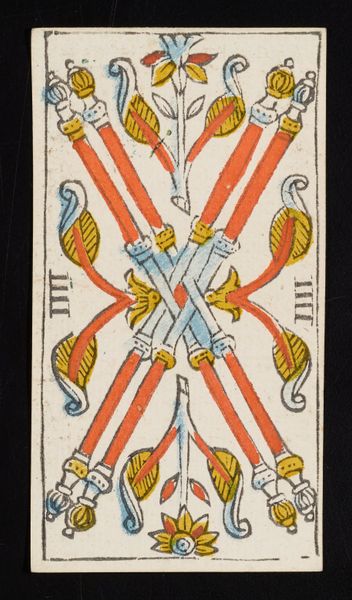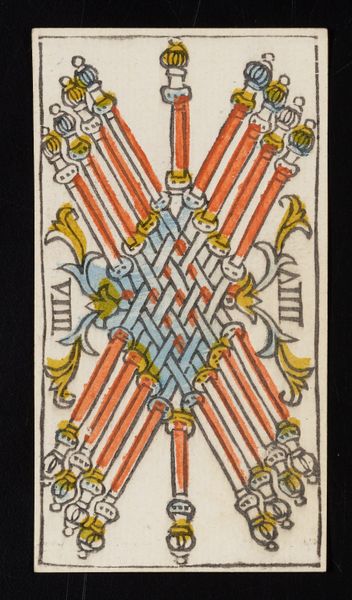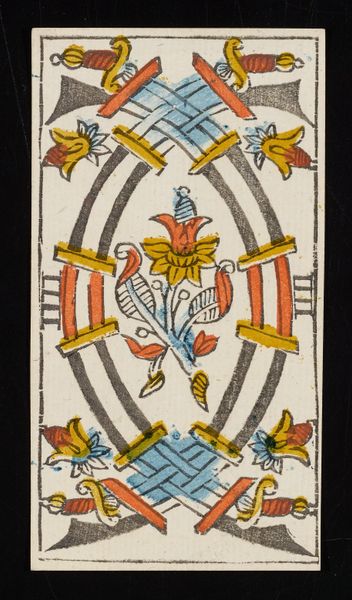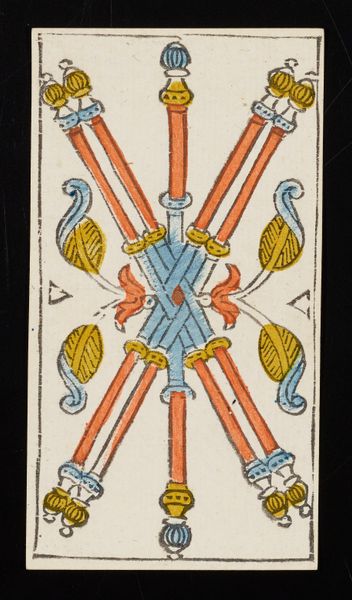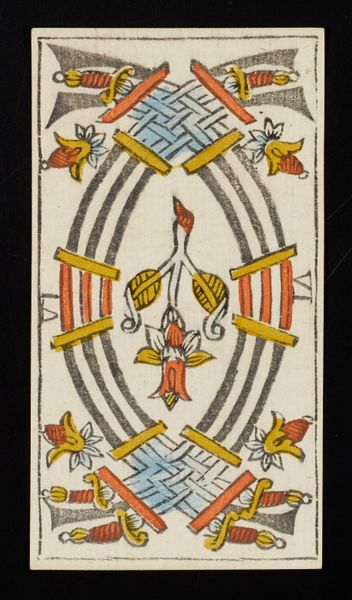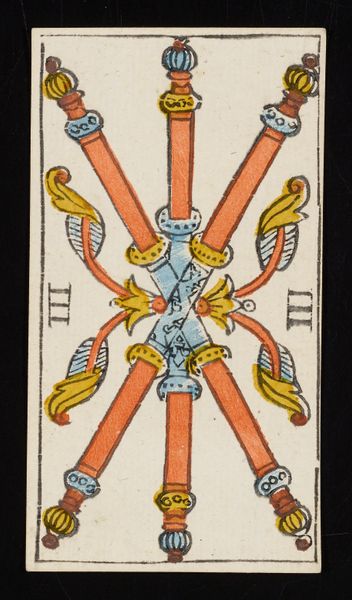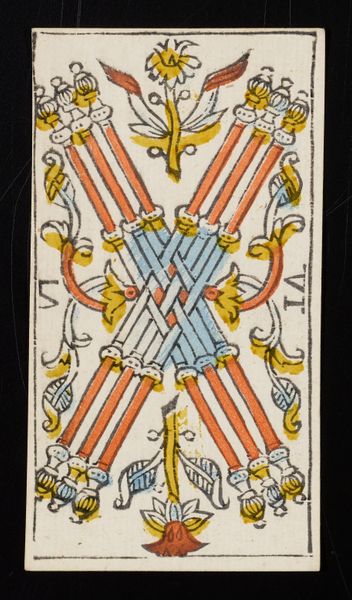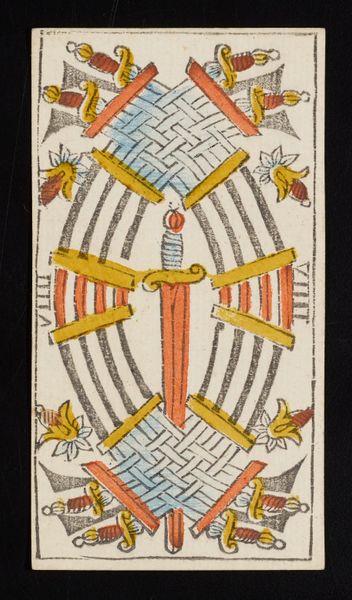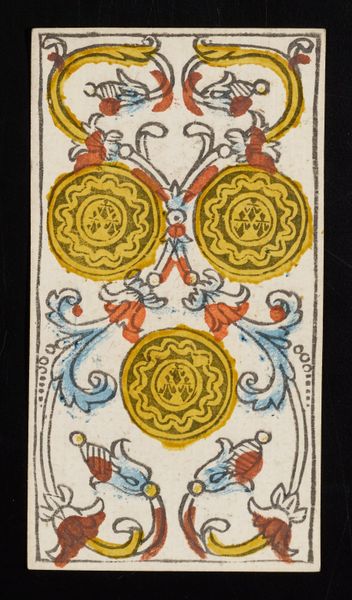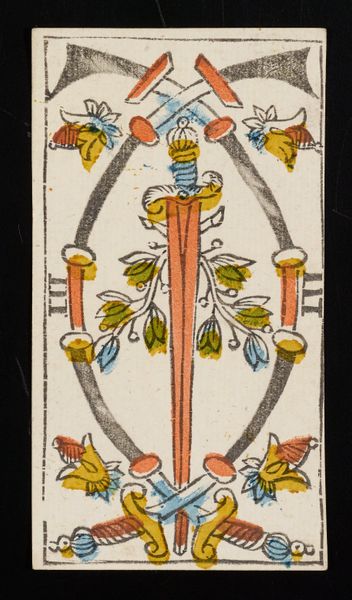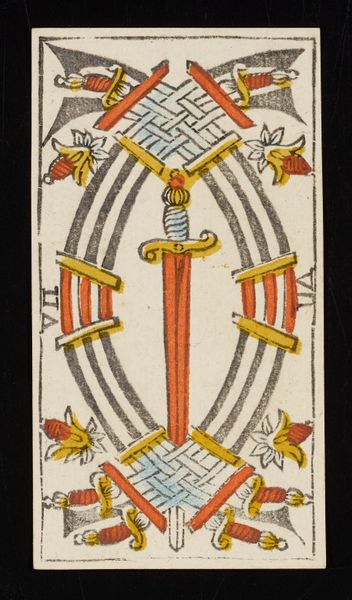
drawing, print, engraving
#
drawing
#
baroque
# print
#
form
#
geometric
#
line
#
engraving
Dimensions: 4 7/16 x 2 7/16 in. (11.27 x 6.19 cm) (image, sheet)4 5/8 x 2 1/2 in. (11.75 x 6.35 cm) (sheet, each)
Copyright: Public Domain
Editor: This is *Two of Batons*, a print made around 1751 by Claude Burdel, currently held at the Minneapolis Institute of Art. It has very geometric lines, and also looks like a playing card. How do you interpret this work, considering the context of its time? Curator: That's an interesting start! Given that the work employs an engraving, we could place it in the cultural context of 18th-century Europe, where printed materials played an increasingly crucial role in disseminating information and shaping public opinion. Tarot cards, of course, had their own history prior, but here, considering the Age of Enlightenment and its emphasis on reason and order, we must ask: does the regularity of the lines or repeated symmetry offer an insight to Baroque sensibility? Editor: That's insightful! I hadn't really considered how its being a print impacted its cultural reach and accessibility. Does the medium itself have any relationship to art during this era? Curator: Absolutely. Printmaking was central to debates around originality, authenticity, and accessibility within artistic practices. Did prints democratize art by making images more readily available to diverse audiences? Or were they seen as merely copies of ‘original’ artworks, somehow cheapening the aesthetic experience? This relates to modern questions of AI art. And who has control, authorship, or the rights of use? Editor: So, this seemingly simple card reflects some of the larger social and philosophical questions of its time? Curator: Precisely. This single card invites us to investigate broader cultural tensions: power structures, access to information, and the very definition of art within a rapidly changing society. Editor: I've certainly learned a lot thinking about this through a cultural lens. Thanks! Curator: My pleasure. It highlights how even the smallest artifact can illuminate wider historical forces and inform our contemporary critical perspectives.
Comments
No comments
Be the first to comment and join the conversation on the ultimate creative platform.
